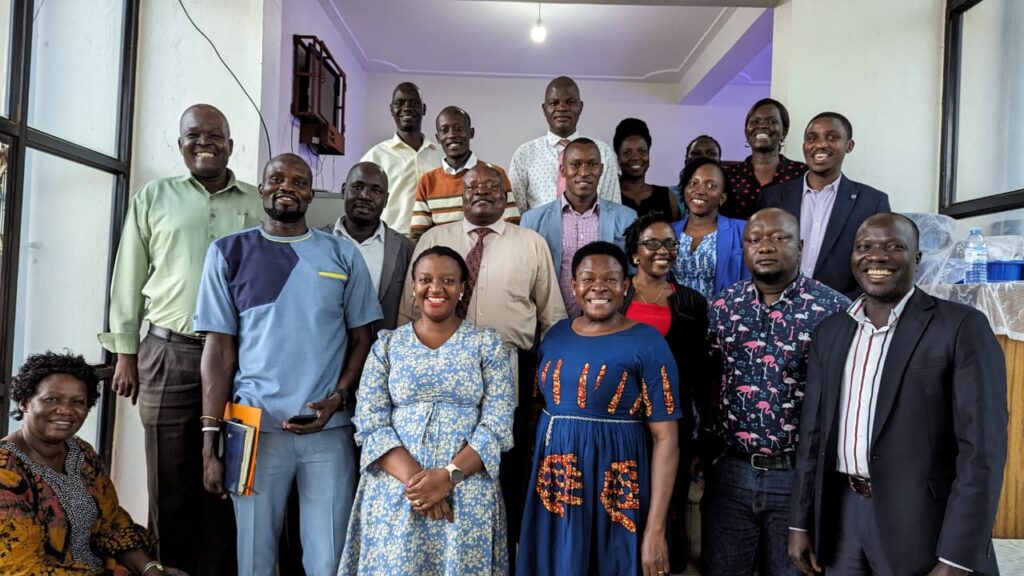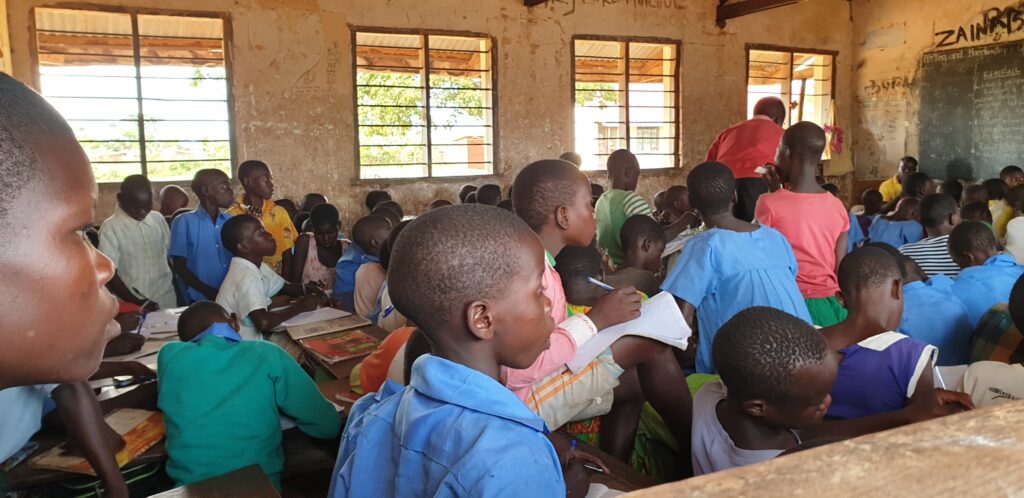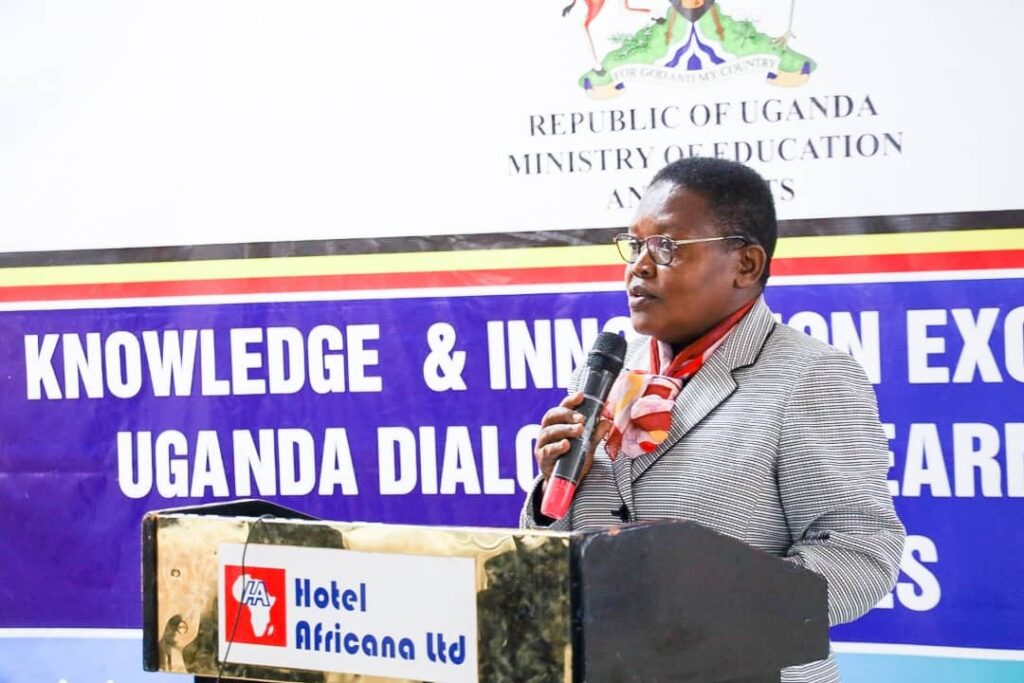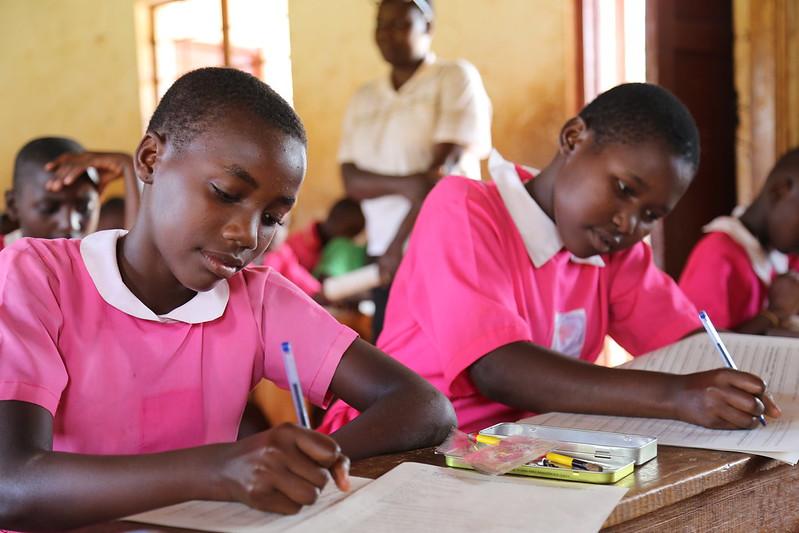Written by: Agrace Abesigamukama & Monica Amuha
DHIS2 for Education
Data use examples using DHIS2 for Education
- Indicative enrollment numbers for 2023/2024 budgeting: Enrollment figures captured in DHIS2-DEMIS informed budgeting an investment project financing (IPF) capitation allocation grants to government schools. Figures were submitted for the budgeting process in Gulu city, Gulu District Local Government and Entebbe Municipality.
- School mapping to support partner activities for school re-entry for Accelerated Education program: One of the sites highlighted the ability to map their schools using the Maps App in DEMIS and provided data to partner organizations to support educational programs in the district. They were able to map schools within each parish/division with the highest level of school dropouts. This data was used by the partners to support re-enrolment of school drop-outs into the Accelerated Education program. The mapping of schools also identified gaps in water supply to inform the provision of boreholes.
- Informing primary teacher transfers: The teacher pupil ratio informed transfer of teachers within the districts. The data on teaching staff captured in the system has enabled identification of schools with limited teaching staff and re-allocation of staff within Gulu city and Gulu DLG.
- Improved local government performance: Every financial year national assessments are conducted to assess performance of all local governments, municipalities and cities in different sectors like health, education, agriculture. The Gulu city team reported that they registered a 94% score for the education department due to improved data management practices using DHIS2-DEMIS. The site boasts of having become a model district where other districts have been coming to learn through the local government exchange learning/benchmarking program.
- Informing health interventions like provision of mosquito nets and planning for polio immunization and tetanus: The district education teams have been able to provide enrollment numbers to inform the distribution of mosquito nets for learners in the fight against Malaria. Enrollment numbers from the Early Childhood Development centers (ECDs) have also provided indicative numbers for the below 6 years polio immunization campaign.
- Providing data for scientific research conducted by local universities: The districts shared that data from the system had been utilized by two masters students from Gulu University and one from Makerere University for their indepedent academic research. One of the studies focused on understanding the relationship between school performance, school feeding and absenteeism. They expressed how the system has been able to highlight educational challenges in the district that have provided areas of interest for research by some of their interns and upgrading officers.
Learning from health and adapting to education
HISP Uganda has over the last ten years gained expertise and best practices in the implementation of DHIS2 in Health in Uganda. Health partners worked closely with the Ministry of Health to harmonize data needs into the standard Health Management Information System (HMIS) tools and supported the national roll-out of DHIS2 in all districts.
Learning from these best practices, the DHIS2-DEMIS project worked with country education partners and different MoES user departments such Gender, Human Resources, School Health Unit, Special Needs and School Feeding Program to develop an integrated termly tool that harmonizes all their data needs. Routine data collection was then facilitated using this newly designed integrated termly tool. This allows collection of data from schools in a standardized format and comprehensive analysis of indicators on enrollment, infrastructure, human resources, school feeding as well as programme-specific indicators on gender equality, learners with special needs and orphaned children (OVC).
Data is essential for informing decision-making in the education sector. Traditional Education Management Information Systems (EMIS) tend to move data from schools up to national and global levels, with limited opportunity for use in solving problems at lower levels such as schools and districts. Data systems also do not typically produce comprehensive reports detailing what is happening in schools. This means that major efficiency and equity issues are often missed.
In Uganda EMIS data was collected with annual school census forms and centrally managed, with data entry and analysis done at the Ministry of Education and Sports (MoES) headquarters. Data was disseminated through statistical yearbooks and factsheets. This centralized management of data led to a lack of timely access to data at districts and schools, due to time lags (6-9 months) between data collection , entry, analysis and dissemination.
Prior to the project implementation, the MoES had last conducted the annual school census in 2017. This created a large data gap, with districts relying heavily on excel sheets and paper to manage their data. Partners and the national team conducted ad hoc data calls to districts to collect data when it was required. This not only created a data collection burden for the districts but led to data quality issues, duplication of efforts and wastage of resources.
Since 2019, HISP Uganda and Save the Children Uganda in partnership with MoES have been supported by Norad and GPE KIX to implement DHIS2-DEMIS as a decentralized EMIS in 4 districts in Uganda. The system was designed to support the capture, analysis and presentation of education data and build local capacity to enhance data dissemination and use across all levels of the education sector.
Approach
A data needs harmonization workshop was held with representatives from the Gender Unit, School Health, Special Needs, Human Resources and Planning departments of the MoES and NGOs (Save the Children, PlayMatters and WarChild). The integrated pre-primary and primary termly data collection tools were developed and reviewed by stakeholders at national, district and school levels prior to approval by the MoES for roll out in 10 implementation sites. This ensured that the district and school routine data needs were also captured. The paper tools were customized into DHIS2-DEMIS and district education teams re-oriented on the tools and how to capture termly data using web and Android devices.
End user videos were developed and shared with the implementation sites to aid on-the-job access to refreshers on both data entry and analysis of the termly data. Due to high staff turnover, these videos will also support the orientation of new staff, volunteers and interns attached to the district education department that support project activities.
Results
Post orientation, the implementing sites were able to collect term II and term III data for the 2022 academic year. The project team conducted support supervision visits to the districts to further build capacity of the district education teams and follow up on timely reporting from the schools. A project review and data use workshop was conducted in January 2023 to review progress in implementation and use of termly data.
To facilitate data analysis and use, individual departmental dashboards and a district scorecard were configured into DHIS2-DEMIS. This allows the visualization of indicators on learner enrollment, special needs learners, WASH, infrastructure, gender issues such enrollment of teenage/adolescent mothers and pregnant young girls. Gender-related indicators are important for assessment of the impact of COVID-19 on learning and the re-entry program for teenage mothers into schools. Absenteeism and reasons for leaving school such as disciplinary issues, re-location, forced marriages, disability and lack of school fees are part of the early warning indicators analyzed for monitoring school dropout.

Visualization of indicators on the dashboards has enabled districts and schools to design immediate interventions and solicit partner support to address challenges. For example in Gulu city, the education office, with support from partners, is holding radio talk shows and podcasts to sensitize the community on the importance of keeping children and adolescents in school.
Primary leaving examination results from the National Examination Board have been imported in the system to allow for more detailed analysis beyond the district pass rate and performance index. Additional indicators captured include school level performance by division, subject, and gender. This enables districts to support schools in designing holistic improvement plans to address specific perfomance issues.
 Before & After: Paper vs. sample dashboard on the 2022 PLE results in DHIS2-DEMIS
Before & After: Paper vs. sample dashboard on the 2022 PLE results in DHIS2-DEMISA district scorecard was developed to allow for visualization of performance on specific indicators against the set national standards. The scorecard has eased sharing of data between different stakeholders such as government departments, schools and partners. The different stakeholders are able to focus resources on under performing indicators.
To improve data dissemination and use at the school level, Save the Children Uganda has been working closely with the district local government to design school status reports for disseminating information from the termly tool to the school administrators. This is crucial as it ensures that schools receive feedback on the data that they collected, which is still a major gap in the education sector. Schools can use information on the school status reports to inform their school improvement plans to, for example; address challenges around high absenteeism rates (teachers and learners), school dropout rates, identify support needed for learners with special needs etc..
The availability of up-to-date routine data has eased planning and empowered districts to utilize data to address their needs and report more effectively. Numerous data use cases were showcased by the districts during a project review and data use workshop.


Implementation Challenges
-
- Intermittent reporting: Districts tend to report well in one term compared to other terms. In addition, districts indicated low reporting rates from privately owned institutions.
-
- Limited coverage: With only 10 implementation sites out of 175 administrative sites. The tools are also limited to pre-primary and primary levels and not secondary, whereas issues of teenage pregnancies are more rampant in lower secondary. The gender unit has expressed its desire to have this data collected from lower secondary schools at a national level.
-
- Limited human resource capacity to support data entry 3 times per year: The district education departments lack statisticians and designated data clerks. The project has had to rely on engaging inspectors of schools, volunteers and secretaries to support data entry which is not sustainable due to conflicting roles, workloads and high staff turnover.
Lessons Learnt to inform the global education community
-
- Harmonization of different data needs in a standardized integrated tool reduces duplication and improves utilization of limited resources. This minimizes the data collection burden at lower levels reducing the need for ad hoc data calls.
-
- Data dissemination and feedback to those who collect data is crucial in improving data use and improving performance at lower levels.
-
- Capacity building of district staff is key in improving data use. The ability of districts to collect, analyze and share data with stakeholders has demonstrated the crucial role of district education offices in improving education service delivery through evidence-based planning and resource allocation.
-
- Education data still remains fragmented with the deployment of multiple data collection tools and systems without being integrated or aligned in one system for comprehensive analysis or data sharing. Numerous education development partners are collecting data in their own systems, with no arena for data sharing. This exacerbates unnecessary duplication and confusion. For example, most of the systems or tools will collect enrollment figures from schools but these numbers tend to vary based on who is collecting the data and what it is going to be used for.
-
- The decentralization of data collection, entry and analysis improves data quality and ownership at the district level. The districts are the closest to the schools and can easily verify or follow up on any data quality issues compared to the national teams.
Recommendations
To address sustainability and contribute to development of an effective EMIS for countries, there is a need to continue to implement, learn, and document best practices around:
-
- Taking a holistic approach to harmonization of data collection needs and tools across partners and different user departments, divisions and directorates within Ministries of Education. Where this is not possible, data sharing avenues should be explored and documented
-
- Data dissemination at the lower levels should be prioritized. Those who collect the data, should receive timely feedback, so that it can be utilized to address local challenges and data needs. This has the potential to cultivate a culture where data collection is not only for reporting purposes but also for actioning.
-
- Continue to leverage on best practices from health and adoption of Apps within DHIS2 for Education community which are developed based on local realities. This can be in the form of SMS reporting for attendance data, data capture at school level using mobile phones and digitization of school status reports for community engagement. This coupled with continuous capacity building has the potential to support stakeholders at all levels to access and utilize education data in a way that is meaningful and beneficial to them.






